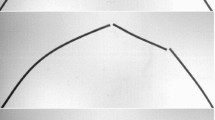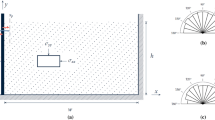
Overview
Access this book
Other ways to access
About this book
Similar content being viewed by others
Keywords
Table of contents (4 chapters)
Authors and Affiliations
Accessibility Information
PDF accessibility summary
Bibliographic Information
Book Title: A Course on Damage Mechanics
Authors: Jean Lemaitre
DOI: https://doi.org/10.1007/978-3-662-02761-5
Publisher: Springer Berlin, Heidelberg
-
eBook Packages: Springer Book Archive
Copyright Information: Springer-Verlag Berlin Heidelberg 1992
eBook ISBN: 978-3-662-02761-5Published: 14 December 2013
Edition Number: 1
Number of Pages: XIX, 210
Number of Illustrations: 43 b/w illustrations
Topics: Classical Mechanics, Acoustics, Condensed Matter Physics, Characterization and Evaluation of Materials



